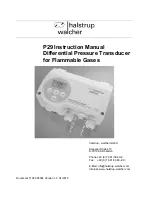
DW1000 User Manual
© Decawave Ltd 2017
Version 2.12
Page 135 of 242
Field
Description of fields within Sub-Register 0x26:08 – GPIO_DIR
GDM1
bit:5
Mask for setting the direction of GPIO1. (See GDM0).
GDM2
bit:6
Mask for setting the direction of GPIO2. (See GDM0).
GDM3
bit:7
Mask for setting the direction of GPIO3. (See GDM0).
GDP4
bit:8
Direction Selection for GPIO4. (See GDP0).
GDP5
bit:9
Direction Selection for GPIO5. (See GDP0).
GDP6
bit:10
Direction Selection for the GPIO6. (See GDP0).
GDP7
bit:11
Direction Selection for the GPIO7. (See GDP0).
GDM4
bit:12
Mask for setting the direction of GPIO4. (See GDM0).
GDM5
bit:13
Mask for setting the direction of GPIO5. (See GDM0).
GDM6
bit:14
Mask for setting the direction of GPIO6. (See GDM0).
GDM7
reg:26:08
bit:15
Mask for setting the direction of GPIO7. (See GDM0).
GDP8
reg:26:08
bit:16
Direction Selection for GPIO8. (See GDP0).
GDM8
reg:26:08
bit:20
Mask for setting the direction of GPIO8. (See GDM0).
7.2.39.4
Sub-Register 0x26:0C
– GPIO_DOUT
ID
Length
(octets)
Type
Mnemonic
Description
26:0C
4
RW
GPIO_DOUT
GPIO Data Output register
Register file: 0x26 – GPIO control and status
, sub-register 0x0C is the GPIO data output register. The
GPIO_DOUT register applies to the GPIO pins when they are selected to operate as GPIO outputs via the
GPIO_MODE and GPIO_DIR registers. It contains a bit for each GPIO pin to individually select the data to
output on the GPIO output pin. The GPIO_DOUT register is designed to allow software to change the output
state of a single pin without knowing the settings of other output pins. This is achieved by having for each
output value selection bit (GOP) an associated mask bit (GOM) used to qualify the write to the GOP bit.
When reading from the GPIO_DOUT register the mask bits are always read as 0, output value bits will read to
show the current output setting for the GPIO pins. Note, this does not mean this is being output since that
depends also on the appropriate selection of the GPIO_MODE and GPIO_DIR registers. The output value
bits and their corresponding mask bits arranged with four GPIO per octet to allow a single octet write to
change the state of an individual GPIO output.
















































